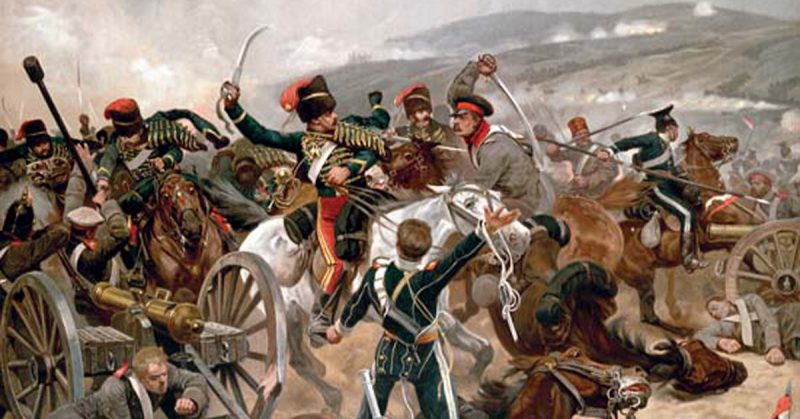The sabre was the traditional cavalryman’s weapon for most of the gunpowder era, and was carried into action long after it had become all but useless in the face of repeating firearms. Yet despite this long association with the cavalry, sabres are also worn as dress swords by infantry officers today. That could be ascribed to military fashion, but in fact, the sabre was carried and used in action by infantry officers.
It is surprisingly hard to define exactly what a sabre is. Some are straight, some curved; some are designed primarily for thrusting and others for cutting. That said, the image that comes most readily to mind when the sabre is mentioned is a single-edged, curved sword designed mainly for cutting. The curved shape serves two purposes; it concentrates the force of a blow at the ‘point of percussion’ and it ensures that the blade will slide along the target’s flesh and slice – sabres are slashing weapons, not chopping implements.
The sabre came into Europe from the East. Weapons like the Russian shashka and the Polish karabela are very similar weapons, as are the Indian talwar and Middle Eastern scimitar. Some or all of these weapons may have influenced the development of sabres in Eastern Europe, and the effectiveness of East European cavalry caused nations such as France to take notice. From around 1688, Western European nations began to field flamboyantly dressed light cavalry modelled on the Hungarian hussars, and armed them with similar weapons.
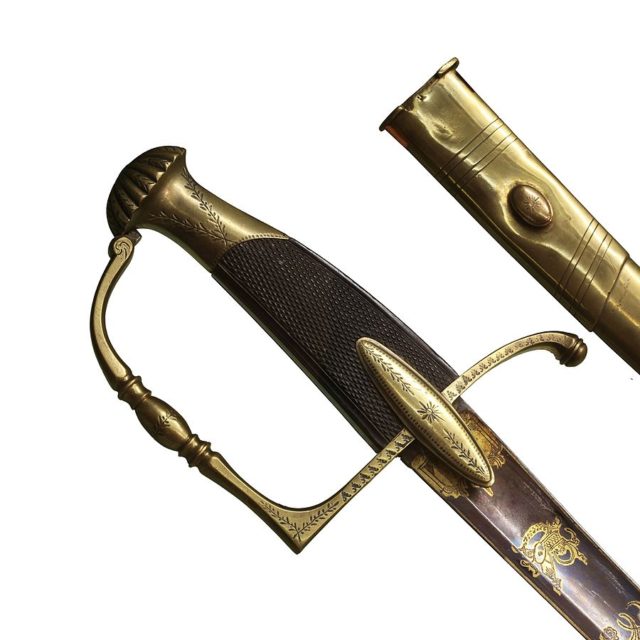
Meanwhile, the typical infantry officer of the era was armed with a sword more suitable for duelling than the battlefield. Most officers’ sidearms were smallswords of one sort or another, and whilst lethal in a one-on-one situation these weapons were not really up to the rigours of the battlefield. They were, however, entirely adequate for pointing out what the regiment should shoot at or making a heroic gesture, and were worn mainly as a badge of rank.
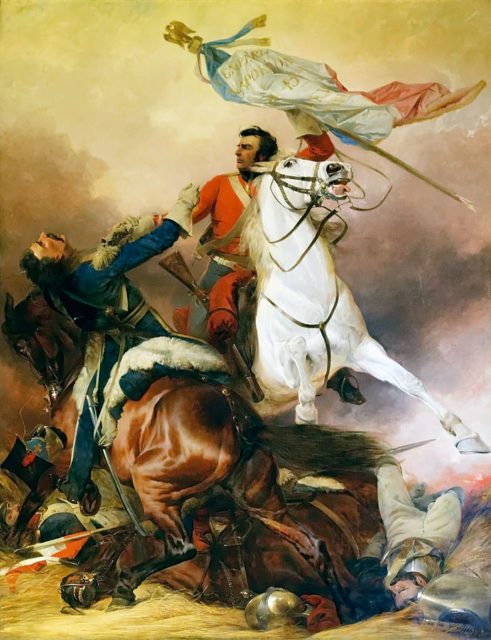
From around 1801, the British army began raising its own light infantry regiments rather than using foreign troops in this role, and this created a new situation for light infantry officer. Whereas a line officer was well protected by his unit under most circumstances, if light infantry were operating dispersed an officer might be attacked by a variety of opponents.
Facing his opposite number in some foreign force – likely armed with a similar sword – the light infantry officer was at no real disadvantage. The situation was a bit different when an enemy infantryman tried to bayonet him or a cavalryman came riding by swinging a large piece of steel at his head. His existing sword, however lethal, was not really up to the task of defending him against these threats.
The British army made an attempt to remedy this situation with the issue of the 1796 Pattern Infantry Sword. A light cut-and-thrust weapon, this was in theory a bit more robust than a smallsword whilst still light enough to fence with. In practice, it was not well regarded due to its poor cutting performance and rather inadequate defensive capabilities. Notably, the handguard offered little protection and the blade was considered liable to break. Against a cavalry sabre or a heavy blow from some other implement a certain weight of metal was considered desirable to provide an adequate defence and the 1796 pattern sword simply did not have what it takes.
In the same year as this less than stellar weapon made its appearance in the infantry regiments, the cavalry received new weapons as well. The light cavalry got lucky; they were issued the 1796 Pattern Light Cavalry Sabre – a weapon so effective that some French regiments complained that it was unfair! The heavy cavalry were less well off; they received a long, straight sword designed for powerful chopping strokes. This 1796 Pattern Heavy Cavalry Sabre has been described as ‘going downwards quite well’ and as behaving rather like a crowbar.
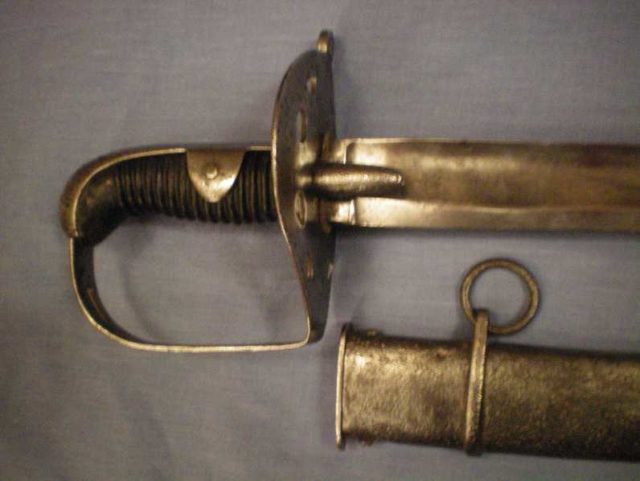
The officers of British light infantry regiments collectively decided the best solution to their problem was to privately purchase light cavalry sabres and leave their ‘official’ swords in camp. This was a reasonable solution, but not ideal. The light cavalry sabre was not in any way ‘light’ as a weapon; it was the sabre used by the light cavalry and had all the characteristics of a cavalry sword. Those did not always translate to great effectiveness on foot.
The 1796 Pattern Light Cavalry Sabre, like many of its kind, was optimised for horseback combat. A cavalryman tended to make one stroke or one parry and then be past his opponent, and even in a melee it was rare for an exchange to resemble a fencing match. Persuading a horse to stay in the right place to exchange sword strokes with an enemy cavalryman was a challenge, and both had to succeed for the fight to go beyond a cut or two. Indeed, John le Marchant, who developed the 1796 pattern sabre, considered that good swords were less important than high-quality horses and skill at handling them.
Thus cavalry swords tended to be long and heavy, to extend reach and to wring the maximum effect out of the few opportunities to strike. That was fine for a cavalryman, whose targets were fleeting. If he missed a stroke or was parried his enemy might well be out of reach before any counter could be made. But the light infantry officer had to face his opponent until one of them was disabled or the changing situation moved them apart.
It was clear that the light infantry officer needed a lighter and perhaps shorter sabre; one that could be recovered quickly after a stroke or which could exploit a sudden opening. The British Army responded by developing the 1803 Pattern Light Infantry Sabre. Although less potent than the much heavier cavalry sabre, this weapon was weighty enough to stop a heavy cut and capable of delivering a debilitating blow of its own. It was also light enough to stay under control through several cuts and parries.
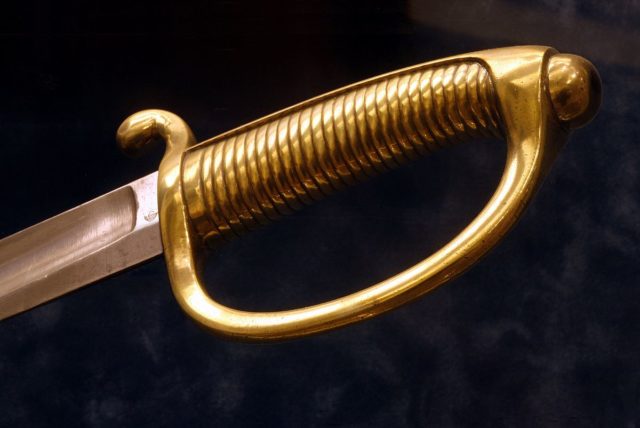
The 1803 sabre was not a duelling weapon, and was still very much a battlefield sword rather than one designed for elegant fencing. It proved highly effective and was well regarded not only as a combat weapon but also as the symbol of the fighting officer. Light infantry officers and commanders of flank companies in line regiments carried these weapons and sometimes engaged the enemy directly. This created a mystique that naturally spread throughout the army.
Soon, staff officers who never went near the enemy were parading around Horse Guards with their fighting-officer’s sabres. Generals who had no business going near a fight adopted them. Highly decorated examples were created, along with variants on the design that may or may not have been more effective in combat. The sabre had become the symbol of the courageous British officer who actually fought his enemies – though it might be argued that it was his job to lead, not to fight.
The 1803 sabre was an excellent weapon, and established both the sound concept of a sabre as a combat officer’s sidearm and its place as what amounted to a fashion accessory. Sabres were just that bit more dashing than the smallswords of officers who stayed within the human rampart of their regiment. Thus when the time came to develop a new infantry officer’s sword, the sabre was an obvious choice – though whether for fashion or combat-effectiveness reasons is an open question.
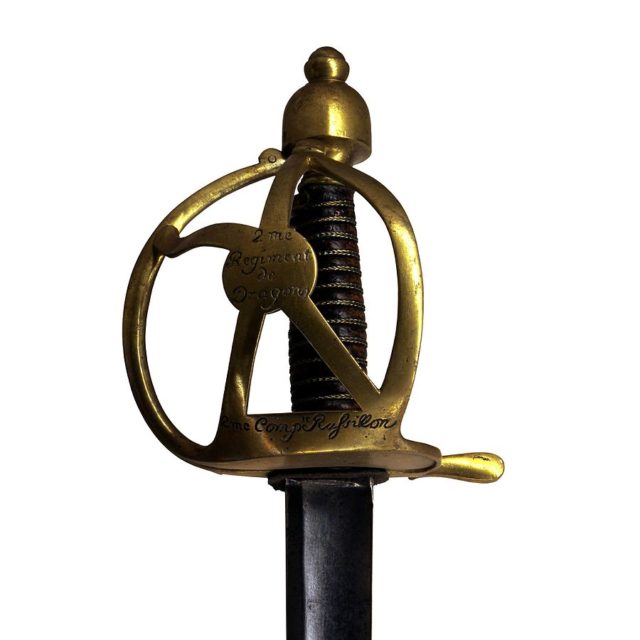
Unfortunately new sword, developed in 1921 and adopted a year later, was not in the same league as its predecessor. Its blade was only slightly curved, which in theory improved thrusting performance. In practice all it did was weaken the weapon’s main mode of attack – the cut – without creating any corresponding improvement elsewhere. The hinged half-basket hilt, which was supposed to give better hand protection, had a tendency to collapse when struck.
In 1845 the British army tried again, this time with a fixed guard and a much better blade. Like the preceding 1821 model, the 1845 sabre was expensive, so some officers took their time about buying the new model. This meant that a mix of infantry sabres were in use in the British Army during the Crimean War, conflicts in India and the colonial wars of the late 19th century.
The argument about whether the cut or thrust is more suitable for battlefield combat has been raging since a few minutes after swords were invented, and has never been resolved to everyone’s satisfaction. What is known is that a weapon needs to be geared mainly towards one or the other. Those that try to be all things to all men usually just get their users killed. Thus as preferences shifted from the cut to the thrust, a new design of sabre was adopted by the British army. This was the 1897 pattern infantry officer’s sword, which was followed into service by the 1908 pattern sabre for cavalry. US cavalry regiments received the Model 1913 ‘Patton’ sabre (designed by George Patton, hence its name) soon afterward.
By this time the sabre was of course completely obsolete as a weapon, but it is retained to this day as a ceremonial and dress weapon. It is a symbol of a time when infantry officers might be required to engage their enemies in hand-to-hand combat, and wearing one with dress uniform is a reminder of a long tradition of going in harm’s way to get the job done.
By Martin J Dougherty, President of the British Federation for Historical Swordplay
Author of Cut & Thrust: European Sword and Swordsmanship.
